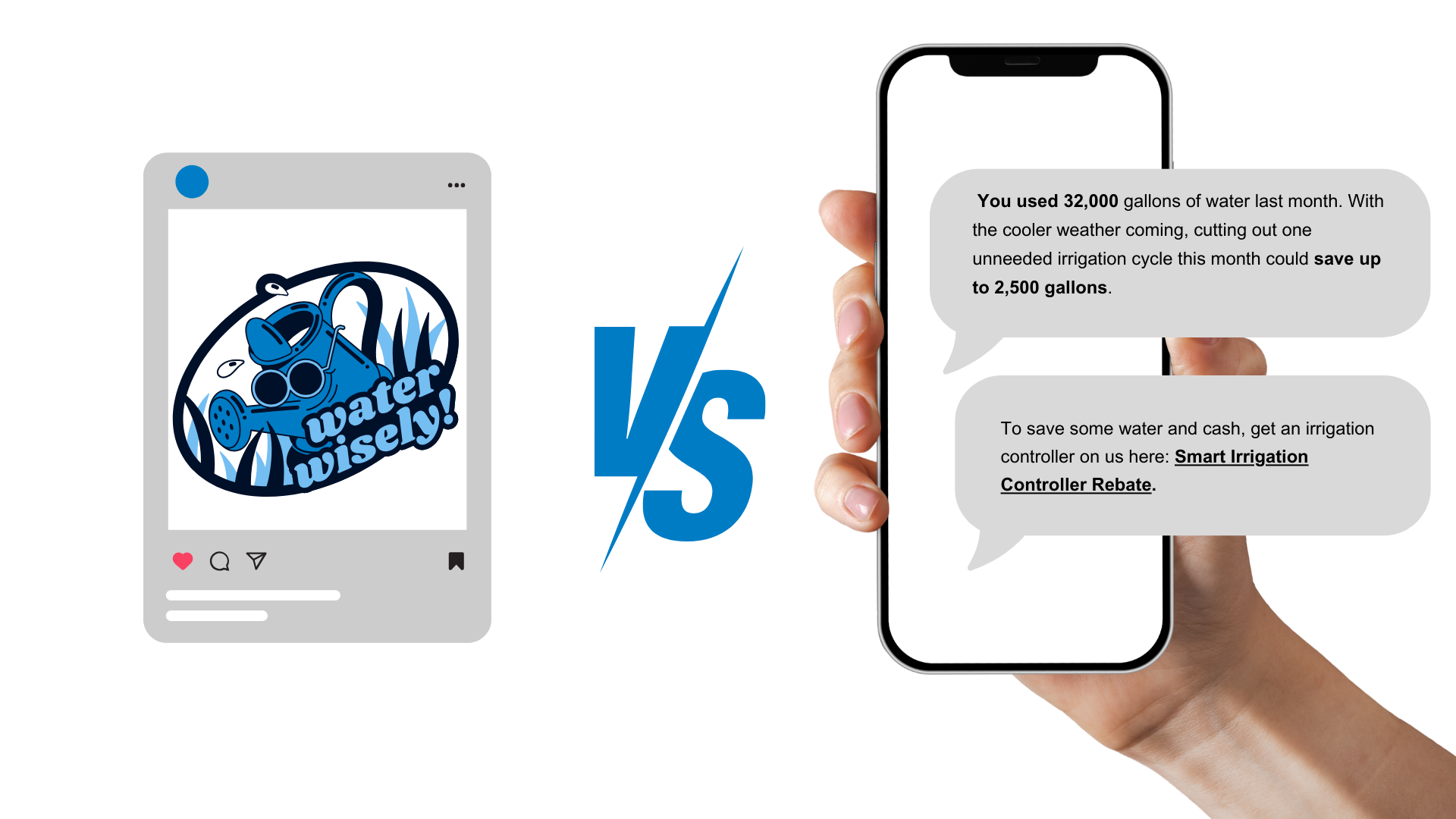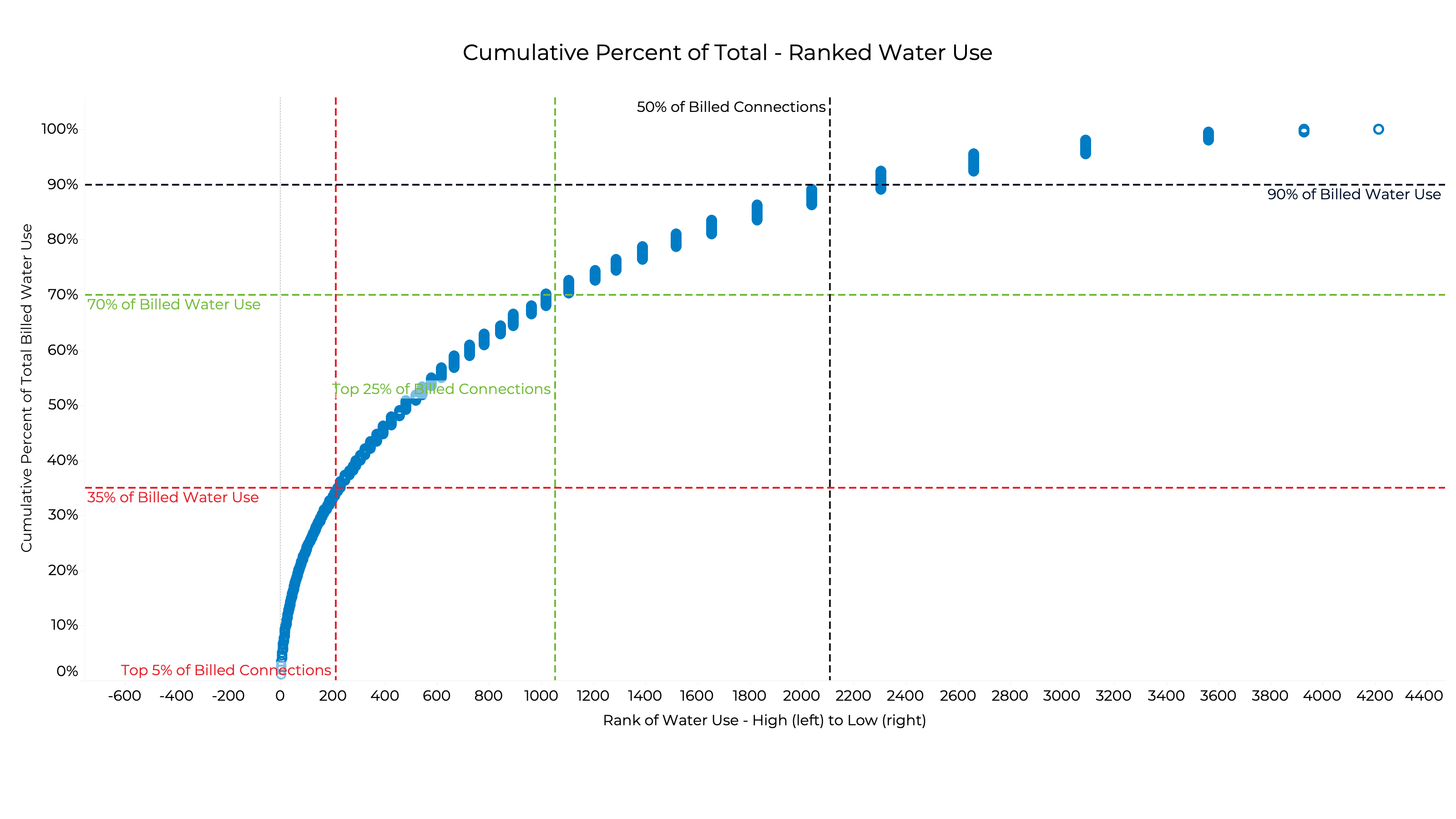
A Small Group Uses Most of the Water.
Water conservation programs often aim to reach every household, but is this the most effective approach? What if most of the water you’re trying to save is being used by just a small group of people? Surprisingly, that’s exactly what we’ve found in numerous water systems—about 30% of users are responsible for 70% of total water consumption. This insight can have a major impact on how we design conservation programs.
The Numbers: What Does This Mean?
The chart below shows the ranked water use of customers and the cumulative percent of total water use for a water provider in Utah. What stands out? A small fraction of water users are responsible for the bulk of water deliveries, while the majority use much less water.

Key Takeaway: The “Spray & Pray” Approach Doesn’t Work
Traditional conservation programs often cast a wide net, offering rebates or incentives to all customers in a service area. But as we can see from the data, that broad approach won’t necessarily reach those who can make the most impact. A “spray and pray” approach may even increase water use in some cases. To maximize both conservation results and your budget, targeted strategies are the key.
Example in Action: Smart Controller Rebate Programs
One powerful example of targeted conservation comes from smart controller rebate programs. One of Yoppify’s analysts ran simulations to see how different approaches to this type of a program would impact water savings. When smart controllers were distributed to everyone, overall water use actually increased. The same happened when controllers were given randomly to 5% of users. But when the smart controllers were targeted to the top 5% of high-water users, we finally saw measurable water savings. This data underscores the importance of precision in conservation efforts. By focusing on high-water users, we can reduce waste and ensure resources are used efficiently.



More Ideas for Deeper Targeting
Conservation That Works
By shifting from broad conservation tactics to data-driven, targeted strategies, agencies can significantly increase their water savings. Whether it’s smart controllers, rebates, or leak alerts, focusing your efforts on the highest water users and most inefficient behaviors will deliver the greatest results.
Are you ready to take a more focused approach to water conservation? Let Yoppify help you implement smarter, more targeted strategies that work.









